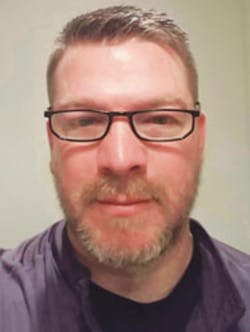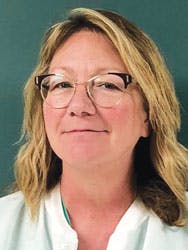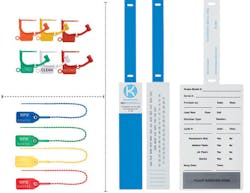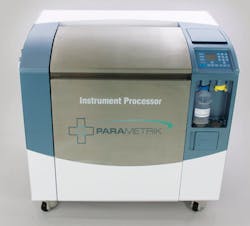It is challenging enough for central sterile/sterile processing department (CS/SPD) professionals to manage instruments within the four walls of a hospital. For those that must transport instruments to and from other facilities, these challenges are considerably greater. Tremendous thought and effort must be put into processes around the delivery of sterile instruments off-site, and the retrieval of contaminated sets back to the CS/SPD in order to prevent the risk for contamination, damage and lost inventory. The demands are even greater when hospitals are transporting not only stainless steel instruments, but also delicate scopes from one location to the next.
This month, we present examples of healthcare organizations that are successfully managing instruments off-site, and offer key considerations, best practices and tips from sterile processing professionals and industry experts.
A tale of two healthcare organizations
Kittitas Valley Healthcare (KVH) and Vanderbilt University Medical Center (VUMC) are two very different healthcare organizations when it comes to size and scope. KVH is a smaller, rural healthcare system located in Ellensburg, WA. It is comprised of a 25-bed critical access hospital and thirteen clinics and specialty services, which are geographically separate from its main facility. VUMC, located in Nashville, TN, is one of the largest academic medical centers in the Southeast, with 1,000-plus licensed beds across its three main hospitals, and a network of hospitals, clinics, physician practices and affiliates covering 172 counties across Arkansas, Kentucky, Mississippi, Tennessee and Virginia.
While both KVH and VUMC have centralized their CS/SPD operations, requiring that instruments be transported to/from facilities, each healthcare organization has taken a different approach.
KVH: From the inside out
When Dave Swory, CRCST, ORT, Central Sterile Processing Charge for KVH, joined the health system six years ago, the hospital had its own CS/SPD to process scopes and instruments, while the clinics used tabletop sterilizers to process instruments used within their own facilities. KVH only performs endoscopies at its hospital, so the clinics were not processing scopes.
“Our health system had multiple processes for sterilization. The hospital was doing it one way and the clinics were doing it a couple of different ways,” said Swory. “For multiple reasons, we decided to pull the sterilizers out of the clinics and handle all processing in the main CS/SPD. Now we have better control and a single process, based on industry standards and guidelines, for the processing of all instruments used across our health system.”
Because their system is spread throughout Ellensburg and Kittitas County, KVH uses a certified transport service to deliver sterilized instruments and to bring soiled instruments back to the main facility. To maintain the sterility of items going to the clinics, Swory and his team package the sterile items in rigid containers that have sealable lids with gaskets, and latches that lock down the lids to the containers. They then set the rigid containers inside tote-type containers, which are used by the transport service to separate and ship the items out to the clinics.
The same process is used to transport soiled instruments back to the CS/SPD. After point-of-use cleaning, the instruments are soaked in an enzymatic solution. When they are ready to ship back at the end of the day, the clinic staff rinse them, seal them in the same type of rigid containers, and mark them as “biohazard.” The transport company delivers them to the hospital where they are brought directly to the CS/SPD.
VUMC: From the outside in
After VUMC added 10 operating rooms (ORs), its in-house CS/SPD simply didn’t have the production capacity or space to process the additional instruments from the growing surgical caseload, or additional system needs in the future. In 2010, Brian Dakin, Administrative Director, CMRP, MMHC, Consulting/Perioperative Supply Chain Services for VUMC, explored the option of rebuilding the facility’s CS/SPD in the medical center’s basement, but at that time the cost was an estimated $400 per square foot to renovate the existing space.
Instead, VUMC built a 52,000 square foot warehouse located eight miles from campus, at a cost of $100 per square foot. Today, this facility, called the Vanderbilt Case Cart Operations Center (VCCOC), processes anywhere between 500-600 instrument sets per day along with 120-170 case carts (can vary based on case mix and volume). This accounts for approximately 70 percent of VUMC’s instrument volume.
“Building this off-site sterile processing department creates the ideal environment, by the book, of how to configure and equip a sterile processing area and gives us that space and throughput without any inhibitors, and it has received accolades from regulatory bodies” said Dakin.
“With regards to scopes, we set rigid scopes in containers with rubber so they are held in place to prevent damage during transport,” said Dakin. “We chose not to transport very expensive, flexible scopes because the risk for damage, and subsequent costs, are too high.”
While the VCCOC model has helped the organization better manage its instrument inventory and minimize the inventory in all locations, VUMC recognized that it must be prepared in the event of case overloads that outstrip inventory capacity. To address this they have developed what Dakin and his team refers to as a “turn center,” an on-site space for processing instruments within the hospital.
“The decision to process on-site is made beforehand after reviewing inventory, set volume and case volume,” said Dakin. “If there is a set or two that we need to process on-site once a month, that makes more sense than going out and buying more of the sets. Making those educated decisions up front helps us avoid excess inventory levels.”
Key considerations when processing off-site
As evidenced by the KVH and VUMC examples, it is possible to effectively and safely handle surgical instruments off-site, but it requires significant pre-planning, continuous monitoring and constant communication between the sterile processing and procedural sites. Swory, Dakin and others in the industry have provided the following recommendations.
Address back end processes
“Once you make the decision to handle instruments off-site it drives the need to fix or change many of the processes that go into it,” said Dakin. “For example, many ORs struggle with inaccurate preference cards. When you are transporting instruments back and forth you want to make sure your database is clean and the preference cards are as accurate as possible to prevent errors or missing instrumentation.”
Dakin and his team also had to look closely at OR scheduling. He points out that as a large academic medical center, VUMC often has residents for different clinics scheduling procedures and information can get lost in translation from the surgeon to the resident.
“A doctor may ask to schedule X procedure but when the resident or clinic scheduler looks at the list of procedures in the system he/she selects the wrong one. As a result the doctor gets the wrong instrument set,” Dakin explains. “So we perform scheduling accuracy assessments where we look in the system for what was actually boarded/booked versus what was performed.”
Dakin adds that successful off-site instrument handling requires system integration and an instrument tracking system. At VUMC, the health system’s enterprise resource planning (ERP) system is interfaced with its Epic electronic health record (EHR) system, and its Epic system is interfaced with its CensiTrac instrument tracking system.
“Our CensiTrac system pulls data from Epic and shows us in real time what procedures are getting scheduled where so we know what case carts surgeons need in what rooms at what times,” said Dakin. “Our scanning system shows us where case carts are located, what instruments are on them and what instruments are missing – all in real time.”
Put policies in place
Laura L. Cortner of The First String Healthcare, who has traveled from California to Florida and many points in between as an interim CS/SPD leader, explains that many hospitals/sterile processing departments have policies and procedures in place that instruct staff to treat every tray coming into the facility as unsterile, and therefore they must send these trays directly to the CS/SPD for processing. She urges off-site processing centers to correct their existing policy language or construct new language so that it enforces this same chain of custody process.
Cortner added that healthcare organizations must have an explicit, written, defined process to include documentation for items as they enter and depart the off-site processing, and quality assurance methodology, as well as sufficient inventory to support surgical volume.
“In the initial implementation of an off-site processing exchange, communication from the user facility to the off-site facility of the shipment of items is essential, especially if the transport of items is via a third party,” said Cortner. “The off-site facility will need to know when and what was shipped to them in order to assure completion and return of items.”
John Kimsey, National Director Professional Services for STERIS IMS, recommends healthcare organizations put into place a “clear and adhered to process” between the CS/SPD and off-site locations for handling extra instruments and missing instruments to ensure instrument trays are completed every night with a reconciliation of “extra” to “missing.”
Kimsey adds that the CS/SPD must strive for “continuous flow” meaning that instruments do not backlog waiting to be processed. He states: “Achieving continuous flow requires the right staff at the right time working to standard work instructions. As off-site processing adds additional transportation time, eliminating backlogs will help reduce the process cycle time and allow the instruments to return in an acceptable amount of time.”
Transport tips
Below, John Kimsey, National Director Professional Services for STERIS IMS, summarizes AAMI guidelines for transportation of instruments between buildings and off-site. He notes that the full guidelines can be found in AAMI/ANSI ST79 sections 6.5, 9.7, and 11.3.
- Segregate clean/sterile items from dirty items with best practice being to never transport sterile and dirty in the same vehicle at the same time.
- Pickup and transport of soiled items should occur as soon as possible to minimize the amount of time between use and decontamination.
- Transportation carts should be designed to effectively contain bioburden, maintain sterility, prevent items from falling or being damaged, be periodically cleaned, and designed for over the road conditions.
- Transportation vehicles and carts should provide environmental controls to maintain temperature and humidity within reasonable ranges and be tested routinely using Data Loggers (Google “temperature and humidity data loggers” for product ideas).
- Sterility maintenance covers “dust covers”, such as plastic see through sealable bags, should be used as protective packaging for sterile items providing an additional barrier to moisture, dust, and environmental contaminates during transportation.
Make sure procedural areas understand their role
Sterile processing does not occur in a void whether it is on-site or off-site. The clinical teams using the instruments play a critical role in instrument care. In order for the CS/SPD to process instruments in a safe, effective and efficient manner, clinicians must properly pre-treat and organize instrument sets on-site following a case.
“The OR must realize they are the ‘raw material’ provider to CS and as such return the correct instruments to the correct tray at the end of the case,” said Kimsey. “Additional enzymatic moisturizing spray should be applied to ensure bioburden does not dry.”
Pre-treating of surgical instruments post-procedure by OR staff is a critical step in sterile processing, helping to loosen organic debris and prevent stubborn bioburden from forming. It is especially important in cases where instruments are being used by a facility that is located minutes or miles away from the CS/SPD. The added travel time from site to site allows for blood, tissue and other substances to harden onto instruments if they are not property treated post-procedure. The CS/SPD must work to ensure that clinicians understand their role in successful off-site instrument processing.
“Flexible endoscopes must be cleaned immediately at the bedside before transportation to a processing area,” said Marvella Thomas, Clinical Consultant for Cardinal Health. “If they are being transported in an enzymatic solution or some other type of fluid, then staff members must ensure they are put into leak proof containers with locking lids so that the fluid doesn’t slosh around and contaminate the transport vehicle and its personnel.”
Follow industry standards and IFUs
“The best piece of advice I can give is to consult documents like ANSI/AAMI ST79 and ANSI/AAMI ST91 that have specific information regarding the best ways to transport and store endoscopes and other sterile items in a way that minimizes the risk of cross-contamination or damage to the sterile package,” said Lindsay Brown, Clinical Education Manager at Key Surgical. “These guidelines were written with the intent of fostering positive patient outcomes and proper storage and transportation play a crucial role in that.”
Regardless of where the processing is taking place, Cortner says it must be done in accordance with the manufacturers’ instructions for use (IFUs), stating: “A source for manufacturers’ instructions for use and processing is part and parcel of the sterile processing world, an expectation, industry standard. Following these IFUs is not negotiable, and language to that point should be included in the off-site processing defined process.”
Even for a small health system, Swory says communication between sites is critical to effectively and safely managing instruments off-site. During the early stages of KVH’s CS/SPD consolidation effort, Swory was surprised at the different processes being used in the clinics in regard to proper instrument handling, care and storage.
“Since we are a small system I have the luxury of performing routine and requested visits to the off-site clinics, doing walk-throughs and showing staff members what is acceptable and what is not,” said Swory. “If I see frequently occurring problems, I use it as a learning moment and build a slide show or other training aid and send it out to the clinic directors to share with their teams.”
Swory adds that his team routinely receives positive feedback from the clinics.
“When moving sterile processing off-site you run the risk of losing control so it is extremely important that everyone understands and is following industry guidelines,” said Thomas. “If I were a clinician using instruments that were processed off-site, I would want some oversight into the off-site practices to ensure the quality and safety of the items coming back to me.”
If it’s not clean, it’s not patient-ready
Recent studies confirm manual cleaning steps continue to be missed and endoscopes remain contaminated prior to patient use. One study noted that steps are missed 99 percent of the time.2 Flexible endoscopes are complex devices that require an average of 76 hands-on minutes and 100-plus detailed steps to reach a level of clean whereby high-level disinfection and sterilization may be achieved.3 Bacteria continue to evolve requiring focus and commitment to achieve patient-safe endoscopes.
PARAMETRIK provides on-site and near-site flexible endoscope reprocessing solutions that incorporate dedicated fleet inventory to ensure endoscopes are ready for every procedure, packaging, moisture retention, 510K-cleared MACH I Digital Cleaning and terminal sterilization system. The company’s Chief Operating Officer, Brian Newton, provides the following advice for better success in manual cleaning.
“Flexible endoscopes should be cleaned at bedside after use and transported immediately to the cleaning room,” said Newton. “Staff should be certified to clean each endoscope and competency inspections performed on a routine basis. Endoscope inventory should be sufficient to allow staff appropriate time to complete each cleaning step. Endoscopes should be tested for cleaning efficiency after the manual cleaning process prior to high level disinfection or sterilization.”
Transport and storage: keeping clean from dirty
It may seem like an obvious statement – keep sterile instruments separate from contaminated instruments – but in practice it is not always an easy task when transporting instruments from one site to the next.
“Clean and dirty devices should be separated and labeled accordingly for easy identification,” said Minerva Loran, President of Clinical Choice, which provides SafeCap transport and short-term storage sterile liners and transport trays for flexible endoscopes. “Clean devices should be transported in clean containers with safeguards in place to protect the tray from contamination during transport. Dirty devices should be transported in containers labeled ‘dirty’ (biohazard) that are clean on the outside to deter cross contamination. Furthermore, devices should be transported in containers that meet OSHA Guidelines for safe transportation to protect the device, staff and patients.”
Brown stresses the importance of instrument storage and transportation and says they are often the most neglected steps in an instrument’s lifecycle. She points to a number of considerations in this area that can affect the sterility of sterilized packages, including holes in the wrap caused by tray stacking, excessive handling of sterile items, inadequately sized transport carts and in general staff members not taking into consideration the environmental conditions and their impact on sterile items.
“Communicating storage and transportation requirements in order to create both on and off-site storage locations that facilitate sterility maintenance is the only way to ensure that sterility is indeed maintained and the diligent work that was put in during instrument reprocessing is respected,” said Brown.
A final word
“Off-site processing is a people-dependent process so you have to continuously discuss it with all of the stakeholders involved – CS/SPD, clinical staff – and make them understand that they need to pull the cord if there is a problem. Because if someone along the process doesn’t mention a problem it will impact the downstream flow,” said Dakin. “It’s also important to note that off-site processing is not a cure for existing CS/SPD ills. Don’t ignore your current issues. If you are not willing to put the time and effort into fixing them, they will come back to haunt you. This experience has given me the tools to help other institutions go on this journey and we are doing just that. So you will hear about more organization doing this in the future.”
References:
- Vanderbilt Case Cart Operations Center (VCCOC), https://ww2.mc.vanderbilt.edu/medsupplychain/38036
- Are your endoscopes clean? Communique, July/August 2014. http://www.ofsteadinsights.com/wp-content/uploads/Williamson%202014%20Communique-Are%20your%20endoscopes%20clean.pdf
- A glimpse at the true cost of reprocessing endoscopes, Communique, May 2017. https://www.bostonscientific.com/content/dam/bostonscientific/uro-wh/portfolio-group/LithoVue/pdfs/Sterilization-Resource-Handout.pdf
About the Author
Kara Nadeau
Senior Contributing Editor
Kara Nadeau is Sterile Processing Editor for Healthcare Purchasing News.









